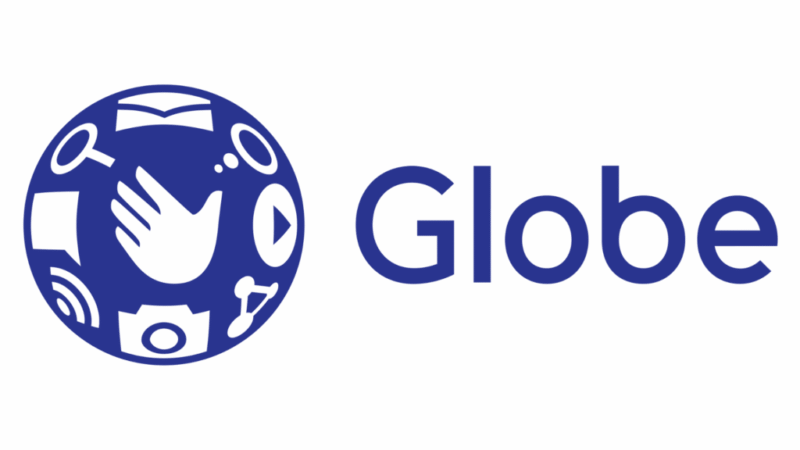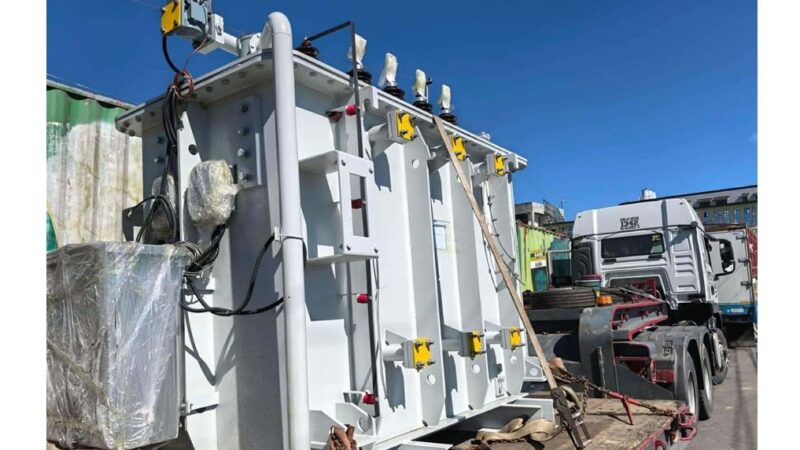Hidden Dangers: Toxic Chemicals Found in Children’s Hair Clips
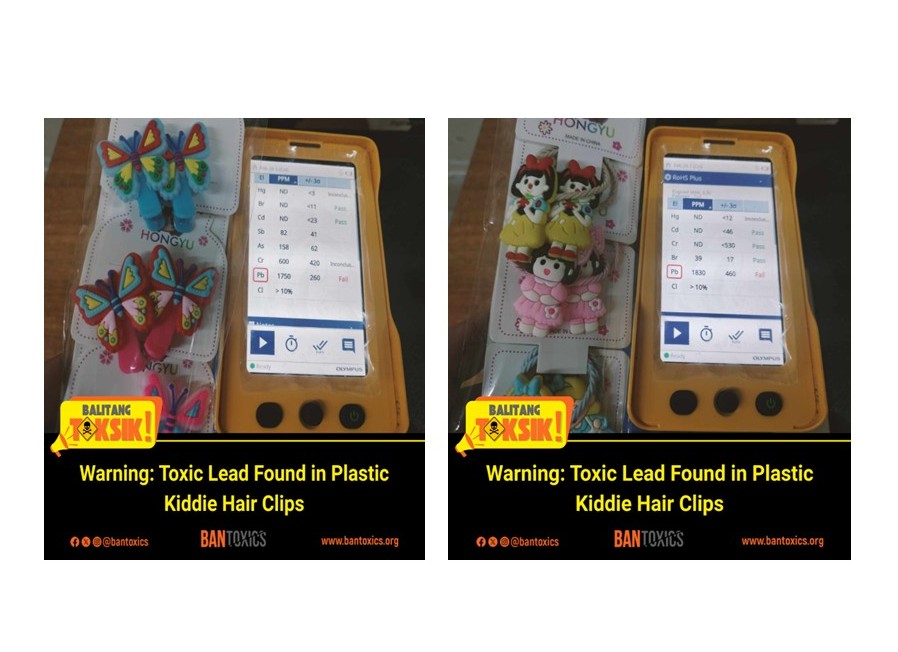
Toxics Watchdog BAN Toxics has raised concerns over the presence of brain-damaging chemicals in children’s hair clips sold in bargain shops and on sidewalks, urging consumers to take caution when buying children’s products such as hair accessories.
In a recent market monitoring activity, the group found colorful plastic hair clips that were both affordable and widely available, priced at ₱60–₱80 per set. A total of 30 hair clip samples were purchased and tested using a Vanta C Series Handheld XRF Analyzer. All samples contained dangerous levels of toxic lead—reaching up to 1,830 parts per million (ppm)—way above the safe exposure limits for children. The hair accessories were made of polyvinyl chloride (PVC), a synthetic plastic polymer linked to various health risks.
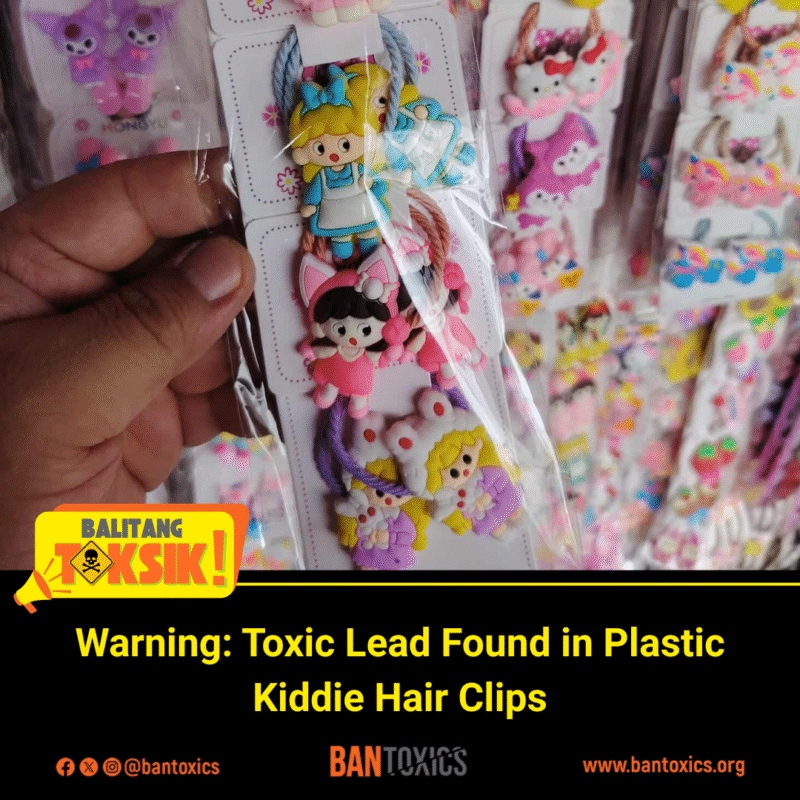
“This should prompt greater public awareness and caution when purchasing children’s items that may contain harmful substances,” said Thony Dizon, BAN Toxics’ Advocacy and Campaign Officer. “Unregulated plastic hair clips, headbands, and other decorative accessories containing dangerous levels of toxic substances can pose serious health risks to children.”
“The exposure pathway for toxic chemicals in hair clips is multifaceted and concerning. Hair clips rest against the scalp and hair for extended periods, allowing chemicals to leach through skin absorption,” Dizon explained.
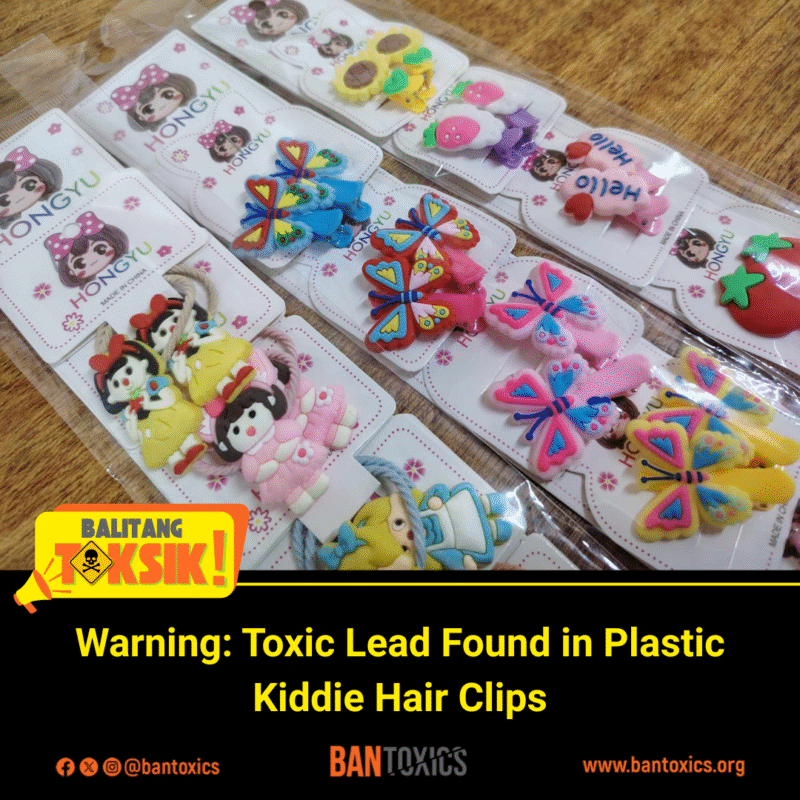
According to the World Health Organization, lead exposure is especially dangerous to a child’s developing brain and can result in reduced intelligence quotient (IQ) and attention span, impaired learning ability, and increased risk of behavioural problems. Even small amounts of lead exposure can cause developmental delays, learning difficulties, and behavioral problems in children.
Last May, the US Consumer Product Safety Commission recalled certain children’s hair clips due to a lead poisoning hazard. “The painted hair clips contain levels of lead that exceed the federal lead paint ban, posing a lead poisoning hazard to children. Lead is toxic if ingested by young children and can cause adverse health issues,” the commission stated.
Dizon noted that the Philippines has yet to pass a law that ensures all children’s products in the market, including accessories, are safe from toxic substances. “Stronger regulation—requiring pre- and post-market product testing, more frequent inspections especially for imported items, and stricter penalties for violations—could help protect children from these hidden dangers,” Dizon added.
BAN Toxics has consistently urged the Philippine government to prioritize the passage of a law on safe and non-hazardous children’s products that will safeguard children’s health. Such a law would promote transparency and traceability in chemical use, while enforcing product labeling and safety standards to protect children from the harmful effects of toxic exposure.
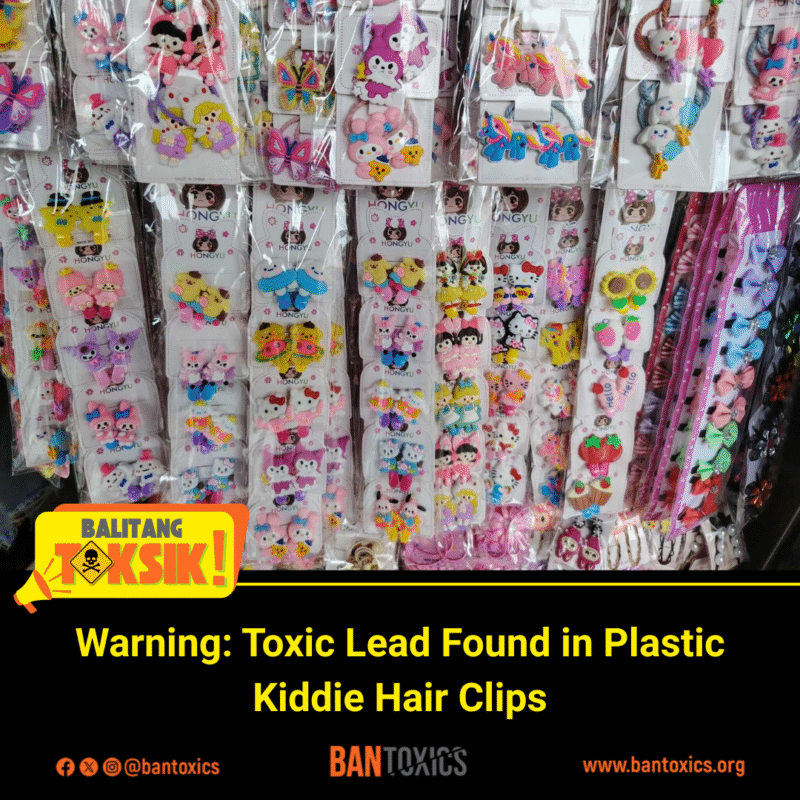
To prevent further exposure, BAN Toxics suggested the following safe alternatives:
1. Look for registered and notified children’s products with FDA approval.
2. Choose hair accessories that meet safety standards and have been tested for toxic substances.
3. Consider hair clips made from natural materials like wood, bamboo, or organic cotton fabric, which are less likely to contain synthetic chemicals.
4. Purchase from established brands with good safety records and transparent manufacturing practices.
5. Choose plain and less-colored accessories, as these are generally safer than those with multiple colors, metallic finishes, or elaborate decorations.
“By making informed choices and advocating for stronger regulations, we can work toward a future where children’s products and accessories are both safe and toxic-free,” the group added. #



